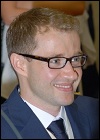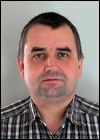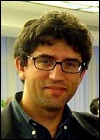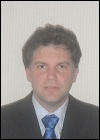| IEEE.org | IEEE Xplore Digital Library | IEEE Communications Society | IEEE Spectrum Online | More IEEE Sites | ||||||||||||||||||||||||||||||||||||||
 |
||||||||||||||||||||||||||||||||||||||
Discriminating against interference in Massive MIMO systems: A statistical approach Massive MIMO systems allow for interference control with simple distributed techniques. In practice the gains are severely limited from so-called pilot contamination effects arising from pilot reuse and leading to corrupted channel estimates. In this talk, we reveal recent results indicating how the specular structure of multipath propogation can be exploited towards dramatically reducing contamination effects. The talk emphasizes novel properties of second order channel statistics in the large scale antenna regime. Such properties are shown to be intrumental in discriminating against interference, both for channel estimation and beamforming purposes.
Slides: PDF Biography: David Gesbert (IEEE Fellow) is Professor and Head of the Mobile Communications Department, EURECOM, France. He obtained the Ph.D degree from Ecole Nationale Superieure des Telecommunications, France, in 1997. From 1997 to 1999 he has been with the Information Systems Laboratory, Stanford University. In 1999, he was a founding engineer of Iospan Wireless Inc, San Jose, Ca.,a startup company pioneering MIMO-OFDM (now Intel). D. Gesbert has published over 200 papers and several patents all in the area of signal processing, communications, and wireless networks. He has guest edited 6 special journal issues on these topics. He has co-authored papers winning sevral paper awards, including most recently the 2012 SPS Signal Processing Magazine Best Paper Award.
Pilot Decontamination Based on Power Controlled Hand-Off Power controlled hand-off enables to separate signals from interfering cells from signals of interested blindly.The separation is based on the singular value decomposition of the received signal. It allows to reject pilot interference from neighboring cells without prior estimation of propagation conditions. Furthermore, the array gain of massive MIMO systems can be utilized to aid channel estimation and avoid pilot contamination as reported in earlier works. We provide preliminary simulation results for a cellular massive MIMO system utilizing the proposed method.
Slides: PDF Biography: Ralf Müller was born in Schwabach, Germany, 1970. He received the Dipl.- Ing. and Dr.-Ing. degree with distinction from University of Erlangen-Nuremberg in 1996 and 1999, respectively. From 2000 to 2004, he directed a research group at Vienna Telecommunications Research Center in Vienna, Austria and taught as an adjunct professor at Vienna University of Technology. In 2005 he was appointed full professor at the Department of Electronics and Telecommunications at the Norwegian University of Science and Technology (NTNU) in Trondheim, Norway. In 2013, he joined the the Institute of Digital Transmission at the University of Erlangen-Nuremberg in Erlangen, Germany. He held visiting appointments at Princeton University, US, Institute Eurecom, France, University of Melbourne, Australia, University of Oulu, Finland, National University of Singapore, Babes-Bolyai University, Cluj-Napoca, Romania, Kyoto University, Japan, and University of Erlangen-Nuremberg, Germany.
Optimal Linear Receivers for Large-Scale Multiuser MIMO Systems Large-scale MIMO systems have recently come at the forefront of wireless communication research, since they promise to offer higher data rates, increased link reliability, and potential power savings. The anticipated performance gains can be achieved by coherent, but simple, processing (e.g., linear reception techniques in an uplink scenario). In this talk, we present a novel, linear reception technique in the uplink of multicell multiuser MIMO systems, which maximizes the received signal-to-interference-plus noise ratio (SINR). This is achieved by exploiting the correlation between the channel estimates and the interference from other cells, due to the pilot contamination effect. We show that at low SINR, maximal-ratio combing (MRC) receiver performs as well as the proposed optimal linear receiver (OLR), however at high SINR, OLR outperforms MRC. Compared with the typical minimum mean-square error receiver, our proposed OLR improves systematically the system performance, especially when the interference is large.
Slides: PDF Biography: Michalis Matthaiou is currently an Assistant Professor at Chalmers University of Technology, Sweden. He received his Ph.D. in 2008 from the University of Edinburgh, U.K. His research interests span signal processing for wireless communications, random matrix theory and multivariate statistics for MIMO systems, and performance analysis of fading channels. Dr. Matthaiou is the recipient of the 2011 IEEE ComSoc Young Researcher Award for the Europe, Middle East and Africa Region and a co-recipient of the 2006 IEEE Communications Chapter Project Prize for the best M.Sc. dissertation in the area of communications. He currently serves as an Associate Editor for the IEEE Transactions on Communications, IEEE Communications Letters and as a Lead Guest Editor of the special issue on ``Large-scale multiple antenna wireless systems'' of the IEEE Journal on Selected Areas in Communications. Back to top Monday, June 10, 16.00 - 18.00
|
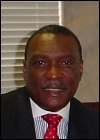 |
Jesse Russell incNetworks |
From AMPS to digital cellular mobile
Slides: PDF
Biography:
Mr. Russell is currently Chairman and CEO of incNETWORKS a Broadband Wireless Communications Company focus on 4th Generation Wireless Communications Networks and Technologies. Mr. Russell has over thirty years of professional experience in directing Research and Development of pioneering technologies, products and services related to the communications industry with Lucent Bell Labs, AT&T and incNETWORKS. For the last twenty years, Mr. Russell’s work has been focused in the wireless communications area as the Chief Technical Officer for Lucent Wireless Business Unit and Chief Wireless Architect and VP of Advanced Communications Technologies with the AT&T Company. Mr. Russell has over a decade of experience with business development aspects of communications technologies, products and service realization through business strategy development, business case preparation, marketing and sales support as well as Customer Interface and Product Portfolio Management. Mr. Russell is a Member of the National Academy of Engineering, a Fellow of the IEEE, and a Fellow of the International Engineering Consortium (IEC). In 1980, Mr. Russell was selected by Eta Kappa Nu as “The Most Outstanding Young Electrical Engineer of the Year” under the age of 32. Mr. Russell has over 75 U. S. Patents to his credit in the Communication Engineering field.
Mr. Russell has also served for over 14 years as Chairman of the Telecommunication Industry Association (TIA) Wireless Communication Standards Organization. As a recognized communications technology expert, Mr. Russell testified before a Congressional Subcommittee on Technology, as well as appearing before Judge Green during the divesture hearings on the breakup of the Bell System. Mr. Russell is also an internationally recognized Wireless Communications Consultant in the area of Advanced Broadband Wireless Technologies and emerging broadband wireless 3G and 4G product strategy, as well as a consultant in regulatory and spectrum strategy. In addition, Mr. Russell consults on wireless standards related issues such as RF health and safety matters as well as Cellular Communication Industry Standards (1G, 2G, 2.5G, 3G “UMTS”, and 4G). Mr. Russell received his Bachelor of Science Degree in Electrical Engineering from Tennessee State University in 1972 and his Masters Degree in Electrical Engineering from Stanford University in 1973.
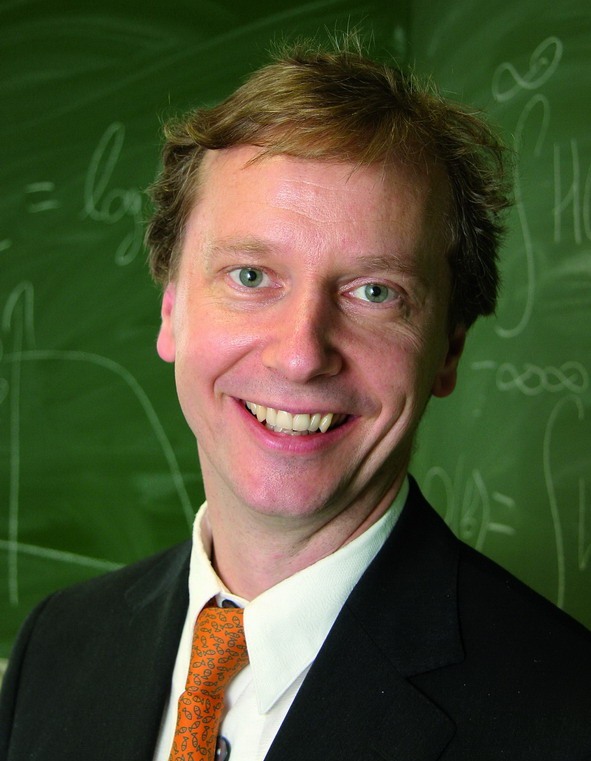 |
Gerhard P. Fettweis cfAED Scientific Director and Coordinator Vodafone Chair Professor TU Dresden |
The development of GSM
The first ever mobile systems supporting international roaming were conceived in Scandinavia. The benefits of roaming inspired the member countries of the EU to embark on extending this concept to all the member states, which required substantial research and development efforts and led to the birth of the Global System of Mobile communications known as GSM. GSM was the first ever public digital mobile radio system, which later spread right across the globe. Initially it only supported voice communications and low-rate data, but its more mature, evolved versions became the first adaptive modulation and coding aided systems used by billions of private and business customers across the globe.
Slides. PDF
Gerhard Fettweis earned his Ph.D. under H. Meyr's supervision from RWTH Aachen in 1990. Thereafter he was one year at IBM Research in San Jose, CA and then at TCSI Inc., Berkeley, CA. Since 1994, he is Vodafone Chair Professor at TU Dresden, Germany, with currently 20 companies from Asia/Europe/US sponsoring his research on wireless transmission and chip design. Gerhard is IEEE Fellow, member of acatech, has received an honorary doctorate and multiple awards. In Dresden he has spun-out nine start-ups so far, and setup funded projects of more than EUR 1/4 billion volume. He has been actively involved in organizing IEEE conferences, most notably being TPC Chair of IEEE ICC 2009, TTM 2012, and General Chair of VTC Spring 2013. He remains active within IEEE societies as well as their publications.
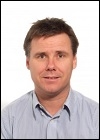 |
Erik Dahlman Senior Expert in Radio Access Technologies Ericsson Research |
The development of 3G WCDMA and HSPA
This presentation will provide backwards looking overview of the development of 3G technology. It will describe the initial discussions on wideband CDMA as the fundamental technology for 3G, the initial specification phase, and the evolution of WCDMA to HSPA providing the foundation for the mobile broadband revolution that the world has since then witnessed.
Slides. PDF
Biography: Erik Dahlman received the Master of Science degree and Doctor of Technology degree from the Royal Institute of Technology, Stockholm in 1987 and 1992 respectively. He is currently the Senior Expert in Radio Access Technologies within Ericsson Research. Erik Dahlman was deeply involved in the development and standardization of 3G radio access technologies (WCDMA and HSPA), first in Japan and later within the global 3GPP standardization body. More recently he has been involved in the standardization/development of the 3GPP Long Term Evolution (LTE) and its continued evolution. He is currently part of the Ericsson Research management team working with long-term strategies in the area of radio-access technologies. Erik Dahlman is the co-author of the book 3G Evolution – HSPA and LTE for Mobile Broadband and its follow-up 4G – LTE and LTE-Advanced for mobile broadband. He has also participated in three other books within the area of radio communication, as well as numerous journal papers and conference contributions. In 1998 he received the IEEE Jack Neubauer Best System Paper award for the paper WCDMA – The Radio Interface for Future Mobile Multimedia. Erik Dahlman holds more than 80 patents in the area of mobile-radio communication and has been named the Inventor of The Year within Ericsson. In October 2009, Erik Dahlman received the Major Technical Award, an award handed out by the Swedish Government, for his contributions to the technical and commercial success of the HSPA radio-access technology.
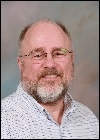 |
Jack H. Winters Stevens Institute of Technology New Jersey, USA |
In this talk we will describe the development of MIMO and Space-Time Coding. Three decades ago, multipath fading and delay spread were considered impairments to be avoided or mitigated, but with these techniques the “impairments” have become the key to substantial performance improvements in wireless systems. We will briefly describe how these techniques evolved from work on adaptive arrays (smart antennas), dual polarization microwave radio, and transmit diversity, along with the journey to wide spread deployment and the more recent extensions to MIMO in radar, MIMO in optical communications, and free-space MIMO.
Slides: PDF
Biography: Jack H. Winters received his Ph.D. in Electrical Engineering from The Ohio State University in 1981. He was with AT&T in the research area for over 20 years where his last position was Division Manager of the Wireless Systems Research Division at AT&T Labs Research. At AT&T he did research on wireless and optical systems, including pioneering research on MIMO and smart antennas for wireless systems, and equalization for optical systems. He is an adjunct professor at Stevens Institute of Technology and has co-founded two startups, while consulting on wireless and optical systems. He is an IEEE Fellow, a former Area Editor for Transmission Systems for the IEEE Transactions on Communications, a former IEEE Distinguished Lecturer, a New Jersey Inventor of the Year for 2001, and a co-recipient of the IEEE Eric E. Sumner Award, with 74 issued U.S. patents.
Back to top
Tuesday, June 11, 14.00 - 15.30
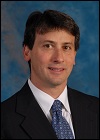 |
Theodore S. Rappaport David Lee/Ernst Weber Professor of Electrical & Computer Engineering Polytechnic Institute of New York University (NYU-Poly) Professor of Computer Science, NYU Courant Institute of Mathematical Sciences Professor of Radiology, New York University School of Medicine |
The millimeter wave propagation channel with steerable antennas
Slides: PDF
Biography:
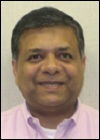 |
Amitabha Ghosh Head, Broadband Wireless Innovation Nokia Siemens Networks USA |
Can Mmwave wireless technology meet the future capacity crunch?
Slides. PDF
Biography:
Amitabha (Amitava) Ghosh joined Motorola in 1990 after receiving his Ph.D in Electrical Engineering from Southern Methodist University, Dallas. Since joining Motorola he worked on multiple wireless technologies starting from IS-95, cdma-2000, 1xEV-DV/1XTREME, 1xEV-DO, UMTS, HSPA, 802.16e/WiMAX/802.16m, Enhanced EDGE and 3GPP LTE. Dr. Ghosh has 55 issued patents and numerous external and internal technical papers. Currently, he is Head, North America Radio Systems within the Technology and Innovation office of Nokia Siemens Networks. He is currently working on 3GPP LTE-Advanced and Beyond-4G systems. His research interests are in the area of digital communications, signal processing and wireless communications. He is a senior member of IEEE and co-author of the book titled “Essentials of LTE and LTE-A”.
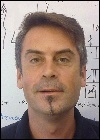 |
David Astely Ericsson Research Sweden |
mmWaves for Future Radio Access - Opportunities and Challenges
Slides: PDF
Biography:
David Astely received his Ph.D. degree in signal processing from the Royal Institute of Technology in 1999. He has been with Ericsson since 2001, has held positions in both research and product development and has experience from 2G, 3G and 4G systems. He was active in the European research project WINNER and later on in 3GPP physical layer standardization of LTE and LTE Advanced, primarily within the areas of advanced antenna systems and time division duplex. As Principle Researcher with Ericsson Research, he is currently working with coordination of research and standardization activities for future radio access including the evolution of LTE beyond LTE Advanced.
Back to top
Tuesday, June 11, 16.00 - 18.00
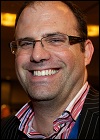 |
Robert W. Heath Jr. Professor, Ph.D., P.E., IEEE Fellow David and Doris Lybarger Endowed Faculty Fellow Director of the Wireless Networking and Communications Group Department of Electrical and Computer Engineering The University of Texas at Austin |
Coverage and Capacity Analysis of mmWave Cellular Systems
Millimeter wave (mmWave) spectrum may be the solution to the spectrum gridlock in cellular systems. mmWave systems overcome potentially high pathloss by using large antenna arrays at both the transmitter and receiver, to provide enough beamforming gain to reverse, if not benefit from, the effects of the higher carrier. In this talk, we examine the system-level performance of mmWave cellular systems with a special focus on coverage and capacity. This talk presents an analysis of mmWave cellular systems using the mathematical framework of stochastic geometry, which has been used to analyze microwave cellular and ad-hoc networks. The analysis incorporates mmWave's key differentiating factors such as the limited scattering nature of mmWave channels, and the use of RF beamforming strategies (also known as beam steering) to provide highly directional transmission with limited hardware complexity. To model mmWave signals' increased susceptibility to signal blockage (shadowing) in urban environments, an exciting new tool is leveraged known as random shape theory to model blockages due to buildings. The results show that, in general, coverage in mmWave systems can rival or even exceed coverage in microwave systems assuming that the link margins promised by existing mmWave system designs are in fact achieved. This comparable coverage translates into a superior average rate performance for mmWave systems as a result of the larger bandwidth available for transmission.
Slides. PDF
Biography:
Robert W. Heath Jr. received the Ph.D. in EE from Stanford University. He is currently a Professor in the Department of Electrical and Computer Engineering at The University of Texas at Austin and Director of the Wireless Networking and Communications Group. He is also the President and CEO of MIMO Wireless Inc and Chief Innovation Officer at Kuma Signals LLC. Prof. Heath is a recipient of the 2012 Signal Processing Magazine Best Paper award and the 2011 EURASIP Journal on Wireless Communications and Networking best paper award. He is the recipient of the David and Doris Lybarger Endowed Faculty Fellowship in Engineering, is a registered Professional Engineer in Texas, and is a Fellow of the IEEE.
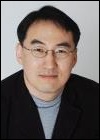 |
Wonil Roh Director Head, Advanced Communications Lab DMC R&D Center Samsung Electronics Co., Ltd. Korea |
Performances and Feasibility of mmWave Beamforming Systems in Cellular Environments
This talk presents how the mobile traffic explosion in the next five to ten years could be met by utilizing wide spectrum in mmWave bands. The feasibility of mmWave bands for cellular applications is demonstrated in two ways. First, simulation results, both in the link level and the system level, of novel hybrid beamforming system with reduced implementation complexity are provided. In addition, actual test results of a proof-of-concept (PoC) system are shown with the data rate close to Gbps in outdoor non-line-of-sight (NLOS) environment with the receiver moving in a pedestrian speed and separated by hundreds of meters from the transmitter.
Slides. PDF
Biography:
Dr. Roh is currently Director and Head of Advanced Communications Lab at Samsung Electronics Corp in Korea, responsible for research of next generation mobile communications technologies. He started working at Samsung Electronics in 2003 in research and development of CDMA and Mobile WiMAX base-stations with the main focus on multi-antenna algorithms and system analysis. Then he led overall WiMAX related standard activities and strategy in Samsung including IEEE, the WiMAX Forum and ITU-R, and served as Chair of Technical Working Group (TWG) of the WiMAX Forum from 2006 to 2011. Since 2011, he has been leading research efforts for the next generation cellular (Beyond 4G or 5G) technologies at DMC R&D Center with a focus on development of disruptive technologies and the feasibility studies. Dr. Roh holds a Doctorate in Electrical Engineering at Stanford University in USA.
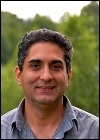 |
Ali Sadri Intel Corporation Director, WiGig and mmWave Standards Chairman and President of WiGig Alliance |
Evolution of mmwave systems from WiGig to Small Cells
The widespread availability and use of digital multimedia content has created a need for faster wireless connectivity that current commercial standards cannot support. This has driven demand for a single standard that can support advanced applications such as wireless display and docking, as well as more established usages such as network access. The Wireless Gigabit (WiGig) Alliance was formed to meet this need by establishing a unified specification for wireless communication at multi-gigabit speeds; this specification is designed to drive a global ecosystem of interoperable products. The WiGig MAC and PHY Specification enables data rates up to 7 Gbps, more than 10 times the speed of the fastest Wi-Fi networks based on IEEE 802.11n. It operates in the unlicensed 60 GHz frequency band, which has much more spectrum available than the 2.4 GHz and 5 GHz bands used by existing Wi-Fi products. This allows wider channels that support faster transmission speeds. The WiGig specification is based on the existing IEEE 802.11 standard, which is at the core of hundreds of millions of Wi-Fi products deployed worldwide. In this presentation we provide an overview of the WiGig technology and usages such as wireless docking and connection to displays, as well as virtually instantaneous wireless backups, synchronization and file transfers between computers and handheld devices. Other usages of the WiGig technology could expand to adjacent markets such as Short range Backhaul and Mobile Offload for cellular systems.
Slides: PDF
Biography:
Dr. Ali Sadri is Director of Intel mobile wireless group for mmWave standards and the Chairman and CEO of the WiGig Alliance. Ali has over 20 years of engineering Scientific and academic background. His Professional work started at IBM and a Visiting Professor at the Duke University. In 2002 he joined Intel Corporation Mobile Wireless division where he is currently leading the mmWave and WiGig standardization activity. Dr. Sadri's expertise is in Wireless Communications Theory, mmWave systems, Channel Modeling, Adaptive closed loop Power control and adaptive modulations techniques. He holds more than 25 Issued patents in communications and wireless systems.
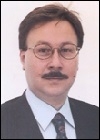 |
Nader Zein Technical Manager and Director of Wireless Solutions NEC Europe |
mmWave Technology - Enabler for High-Capacity High-Density Radio link
Over the years, there has been continuous and ever increasing demand in data traffic stretching the capacity requirements on the backhaul and transport layers of the communication networks. In this talk, we look at potential applications which would benefit from high capacity links offered by Millimetre Wave (mmWave) radio, and we present the key role which mmWave radio will play in realising an unprecedented ultra-high-capacity radio of 10Gbps in high-density deployment scenarios. Capabilities of the mmWave radio will be analysed in terms of its link length and availabilities. A practical mmWave radio solution for backhaul is also presented.
Slides: PDF
Biography:
Dr Nader Zein is a Technical Manager and Director of Wireless Solutions at NEC Europe. His research interests include (but not limited to) Communication Systems, Future Wireless Broadband Communications, Self-organised and Configurable Networks, Communication Systems for Aviation Security and Techniques for IMT-Advanced and Beyond. Dr Nader Zein built his reputation as one of the world’s leading scientists during his involvement in the IEEE802.16, WiMAX Forum, ETSI BRAN, ETSI HYPERACCESS, DVB-DSNG, DVB-RCS, DVB-H and DVB-S2 International standardization bodies, where he chaired a number of working Groups and initiated the development of a numerous International Standards. He was elected as a Technical Advisor to the RTCA and EUROCAE, the US and European Standardization body specializing in aviation specifications. His reputation has been cemented by his publications in National and International Professional Journals, over 80 standards contributions and by his election to number of National and International Professional Committees.
Back to top
PROGRAM AT A GLANCE >>
KEYNOTE SPEAKERS >>
INVITED SPEAKERS >>
TECHNICAL SYMPOSIA >>
INDUSTRY & BUSINESS PANELS >>
TUTORIALS >>
WORKSHOPS >>
SOCIAL EVENTS >>
